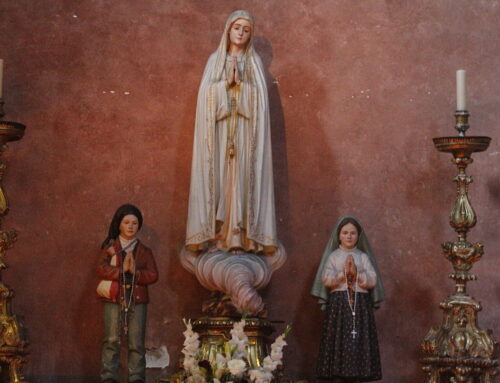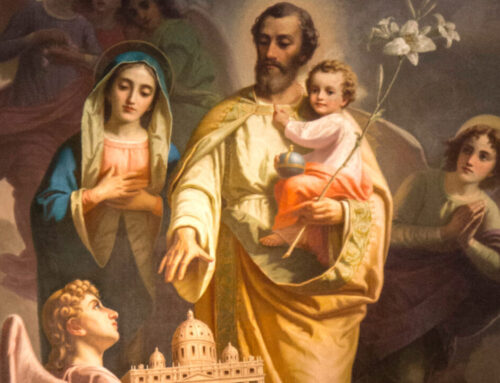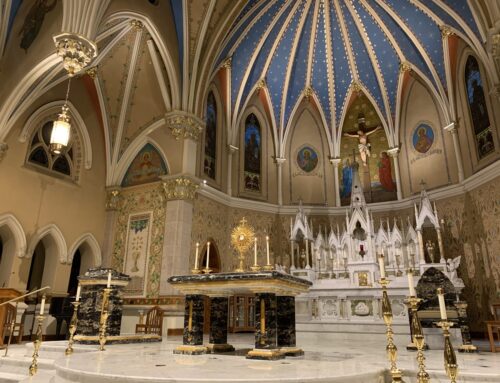Readings for the Feast of Our Lady of Guadalupe
Before my deeper conversion into Catholicism took place, I thought Marian apparitions like Our Lady of Guadalupe were kind of foreign and hard to take seriously… They seemed really unrelatable and superstitious to me — strange legends that only distracted from God. “Where does anything like that happen in the Bible,” I might have honestly said at that point in my life.
But since then, thankfully I’ve gotten to know Our Blessed Mother much better. And I believe our Gospel passage this morning — the “Visitation” as we call it — teaches us something crucial about all authentic Marian apparitions.
At it’s core, Mary’s visit to Elizabeth is a story that reveals the deepest concerns of Our Lady’s immaculate heart: The heart of a Mother who desires to visit us, to comfort us, to strengthen us, to encourage us, to celebrate and rejoice with us over the great things God has done in our lives. Above all, the Visitation shows us that Mary is a Mother who brings with her the real presence of the Lord Jesus. We hear this echoed each time we pray the Hail Mary: “The Lord is with you!” Mary desires to visit us. Her child is called Emmanuel: God-with-us. She wants to be with us as well.
For a few moments, let’s reflect on Our Lady of Guadalupe’s appearance on Tepeyac Hill through the lens of the Visitation.
As we heard in the gospel, as Mary first approaches Elizabeth, her cousin responds in true surprise and humility: “How does this happen to me, that the mother of my Lord should come to me?” As if to say: How can this be happening to me? I’m so lowly, so insignificant! Isn’t this our response to God’s grace more often than not? “How can this be happening to me? Why not visit somebody else, Lord? Someone more important, more influential?”
Juan Diego’s words were not so different in his conversations with Our Lady of Guadalupe: “I beg you,” he said, “to entrust your message to someone more illustrious who might convey it in order that they may believe it, for I am only an insignificant man.”
But Mary was unfazed by Juan Diego’s suggestion. Our Lady always seems to visit the most unlikely people imaginable — She chooses for her messengers the least influential, the least powerful, the least believable… And yet in these unlikely selections, we catch a glimpse of God’s profoundly unexpected logic — the logic, ultimately, of the Incarnation. For when the Lord approached Mary with that divine request: the request to bear His Son and give Him flesh, was He not choosing the lowliest and the least influential to carry out His masterpiece of grace? Was He not selecting the weakest to accomplish His greatest act of divine power? Mary reminds us of this very fact in her Magnificat, her song of praise: “My spirit rejoices in God my Savior, for he has looked with favor on his humble servant!” …He has shown the strength of his arm, he has scattered the proud in their conceit. He has cast down the mighty from their thrones, and has lifted up the humble.”
This is how God operates. As St. Paul tells us in his letter to the Corinthians: “God chose the foolish of the world to shame the wise, and God chose the weak of the world to shame the strong.” Accordingly, Mary operates by that same Incarnational logic, for she is truly the Lord’s handmaiden. Time and time again, she visits the lowly and foolish of the world that they may become her emissaries to the strong.
We also see in Elizabeth’s words to Mary a second crucial element of all authentic Marian apparitions. We hear Elizabeth exclaim: “At the moment the sound of your greeting reached my ears, the infant in my womb leaped for joy!”
John the Baptist reacts emphatically to the coming of Mary and Jesus. He literally leaps for joy! So too, whenever Our Lady visits us by way of an apparition, there is a tangible effect. There is visible fruit that lasts. One could say that after Our Lady of Guadalupe visited Mexico, the entire nation leapt for joy! The Mexican people responded with vigorous faith and devotion which continues five hundred years later, down to this very day. The Shrine of Our Lady of Guadalupe, which houses the miraculous image itself, remains one of the most visited pilgrimage sites in the world.
I’ll close this morning by simply sharing with you the words Our Lady of Guadalupe spoke to Juan Diego in her Visitation to him on Tepeyac Hill. It’s a simple yet profound message that reveals the heart of Mary, who so eagerly desires to visit us during our time of exile here on earth:
“There is nothing to frighten and distress you,” she says to us, “Do not let your heart be troubled, and let nothing upset you. Is it not I, your Mother, who is here? Are you not under my protection? Are you not, fortunately, in my care?”




